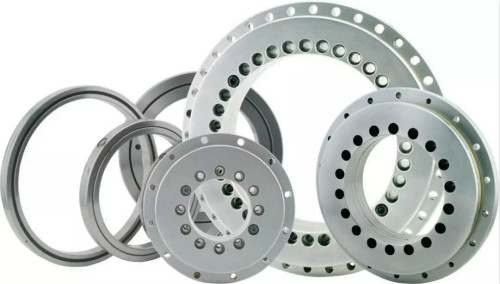It is the premise of selecting suitable bearing to correctly grasp the use position and use conditions and environmental conditions of bearings in mechanical devices.To achieve this, data and information on the following aspects are required:
(1) the function and structure of the mechanical device
(2) the use of bearing parts
(3) Bearing load (size and direction)
(4) Rotation speed
(5) Vibration and shock
(6) Bearing temperature (ambient temperature, temperature rise)
(7) the surrounding atmosphere (corrosive, clean, lubricity)

Selection of bearing configuration mode
Usually, the shaft is supported by two bearings in the radial and axial direction. At this time, the bearing on one side is called the fixed side bearing. It bears both radial and axial loads and plays the role of the relative axial displacement between the fixed shaft and the bearing box.The other side is called the free side, which only bears the radial load, and the axial direction can move relatively, so as to solve the problem of the expansion part of the shaft and the spacing error of the installation bearing caused by the temperature change.
For fixed side bearings, bearings with rolling surfaces moving axially (such as cylindrical roller bearings) or with assembly surfaces moving (such as centripetal ball bearings) should be selected.On a relatively short shaft, when the fixed side and the free side are not much else, bearings with only one-way fixed axial movement (such as centripetal thrust ball bearings) are used.
Selection of bearing type
When choosing bearing types, it is crucial to fully grasp the use conditions of bearings.The following table lists the main analysis items:
1) Installation space of bearings
The bearing type that can be accommodated in the bearing installation space pays attention to the rigidity and strength of the shaft when designing the shaft system, so the shaft diameter is generally determined first, that is, the inner diameter of the bearing.However, there are many size series and types of rolling bearings, from which the most appropriate bearing type should be selected.
2) load
The bearing load is varied, such as the size of the load, whether it is only radial load, whether the axial load is one-way or two-way, the degree of vibration or impact, and so on.After considering these factors, choose the most appropriate bearing type.
In general, the radial load capacity of bearings with the same inner diameter increases in the following order: deep groove ball bearings < angular contact ball bearings < cylindrical roller bearings < tapered roller bearings < self-aligning roller bearings
3) speed
Can adapt to mechanical speed bearing type [to benchmark the threshold of the bearing rotating speed in limiting speed, its value is shown in table bearing size] bearing limit rotational speed is not only to take on bearing type is limited to the bearing size, cage type, precision grade, load condition and lubrication method, etc., therefore, when the choice must consider these factors.The following bearings are mostly used for high speed rotation: deep groove ball bearings, angular contact ball bearings, cylindrical roller bearings.
4) Rotation accuracy
The spindle of the machine tool, the steam turbine and the control machine require high rotation accuracy, high speed and low friction respectively. At this time, bearings with a precision of more than 5 grades should be used.The following bearings are generally used: deep groove ball bearings, contact ball bearings, cylindrical roller bearings.
5) rigid
The type of bearing that can meet the rigidity required for mechanical shafting [when the bearing is under load, the contact part of the rolling element and the raceway will produce elastic deformation.
“High rigidity” refers to the small amount of deformation of this elastic deformation] in the machine tool spindle and the final stage of the vehicle reduction device, in order to improve the rigidity of the shaft, but also must improve the rigidity of the bearing.Roller bearings bear less deformation due to load than ball bearings.The rigidity can be improved by applying preload (negative clearance) to the bearing.The method is suitable for angular contact ball bearings and tapered roller bearings.
6) Relative tilt of inner ring and outer ring
Analyze the factors that cause the relative tilt of the inner and outer rings of bearings (such as shaft deflection caused by load, poor accuracy of shaft and housing or installation error), and select the bearing type that can adapt to this service condition.If the relative tilt of the inner ring and the outer ring is too large, the bearing will be damaged due to internal load.Therefore, a bearing type that can withstand this tilt should be selected.Generally speaking, the inclination Angle (or self-aligning Angle) is allowed to increase in the following order: cylindrical roller bearings, tapered roller bearings, deep groove ball bearings (angular contact ball bearings), self-aligning roller bearings (ball bearings).
7) Installation and disassembly
It is more convenient to use cylindrical roller bearings, needle roller bearings and tapered roller bearings with separable inner and outer rings when the assembly and disassembly frequency and assembly and disassembly method are frequent.Tapered hole self-aligning ball bearings and tapered hole self-aligning roller bearings can be easily assembled and disassembled by the use of fasteners or release sleeves.
If you have any questions,pls feel free to contact us.
- YRT rotary table bearing
- YRTS rotary table bearing (high speed series)
- YRTM with integral angular measuring system series
- ZKLDF axial angular contact ball bearing series
- RA series crossed roller bearing
- SX series crossed roller bearing
- CRBH series crossed roller bearing
- RE series crossed roller bearing
- RU series crossed roller bearing
- RB series crossed roller bearing
- XR/JXR series crossed taper roller bearing
- Crossed roller bearing

✉️ bearing20@hyzcgroup.com
📞 +86 15236685001





